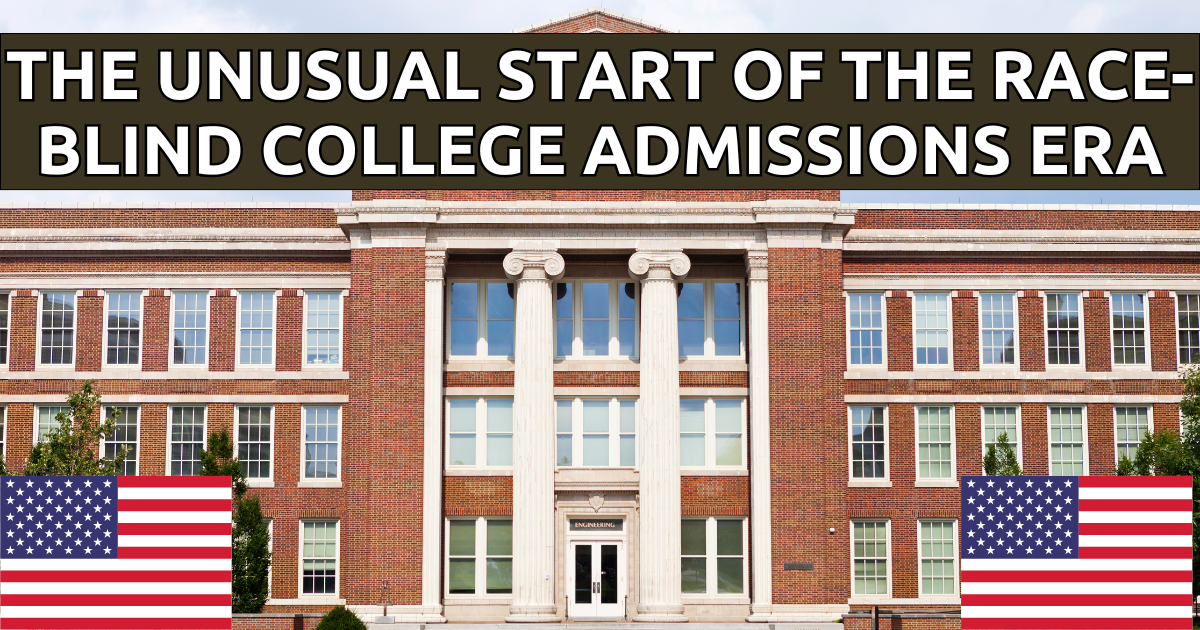The Unusual Start of the Race-Blind College Admissions Era. The debate over the use of race in admission decisions has been challenging because it demands a trade-off among three worthwhile goals: race-blindness, academic selectivity, and a semblance of racial diversity on exclusive campuses. Please read the complete blog to learn in detail about the first selection of applicants of the race-blind college admission era.
The Unusual Start of the Race-Blind College Admissions Era
In a significant decision, the U.S. Supreme Court on Thursday successfully ended race-conscious admission programs at colleges and universities across the country. In a ruling divided along political lines, the six-justice liberal supermajority discontinues admissions programs at Harvard and the University of North Carolina. When colleges started declaring the makeup of their incoming freshman classes last year, it was the first admission cycle since the Supreme Court outlawed affirmative action. It was like there was some kind of mistake.

The Court’s decision in Students for Fair Admissions v. Harvard had been almost universally expected to produce big changes. Elite universities warned of a return to diversity levels not seen since the early 1960s, when their college classes had only a handful of Black students. But when the statistics were in, a number of the nation’s most prestigious universities reported the opposite outcomes. Yale, Dartmouth, Northwestern, the University of Virginia, and Wesleyan, Williams, and Bowdoin all ended up enrolling more Black or Latino students, or both. Princeton and Duke appear to have kept their demographics basically stable.
These results surprised everyone and have raised two competing possibilities. One is that top universities can preserve racial diversity without taking race directly into account in admissions. The other favored by the coalition that successfully challenged affirmative action in court is that at least some of the schools are simply ignoring the Supreme Court’s ruling—that they are, in other words, cheating. Finding out the truth will likely require litigation that could drag on for years. Although affirmative action was outlawed in 2023, the war over the use of race in college admissions is far from over.
The Cornell team used data from an unnamed university to change the influence of the 2023 Supreme Court ruling in Students for Fair Admissions (SFFA) v. Harvard, which does not allow colleges and universities to consider race in admissions. They discovered that the number of top-ranked individuals who identified as underrepresented minorities (URM) reduced by 62% when removing race as a factor from the school’s applicant-ranking algorithm. At the same time, the test scores of top-ranked applicants did not significantly increase.
The senior author, René Kizilcec, associate professor of information science in the Cornell Ann S. Bowers College of Computing and Information Science, stated, “We see no evidence that would support the narrative that Black and Hispanic applicants are admitted even though there are more qualified applicants in the field.”
In the new study, the researchers started by building an AI-based ranking algorithm for the university, which they trained on past admissions decisions to predict the likelihood of a candidate’s acceptance based on their common application. Then, they retrained the algorithm without features related to race and rescored the applicants to see how the recommendations changed. Jinsook Lee, a doctoral student in the field of information science and co-first author, presented the study “Ending Affirmative Action Harms Diversity Without Improving Academic Merit” at the ACM Conference on Equity and Access in Algorithms, Mechanisms, and Optimization (EAAMO ’24), Oct. 31 in San Luis Potosí, Mexico. He said, “There is a huge drop in the URM students when you look at the top-ranked pool of applicants.”
The University of California system was sued on 3 Feb, Monday, by a group of students for alleged racial discrimination in admissions because they favor Black and Hispanic students and discriminate against white and Asian American applicants. The students in this group said that the use of racial preferences at all nine of the system’s campuses lets students with inferior academic credentials win admission at the expense of better-qualified applicants. According to the students, this prohibits the equal protection clause of the U.S. Constitution’s 14th Amendment, as well as Title VI of the Civil Rights Act of 1964, which bars federal funds applicants from discrimination based on race.
